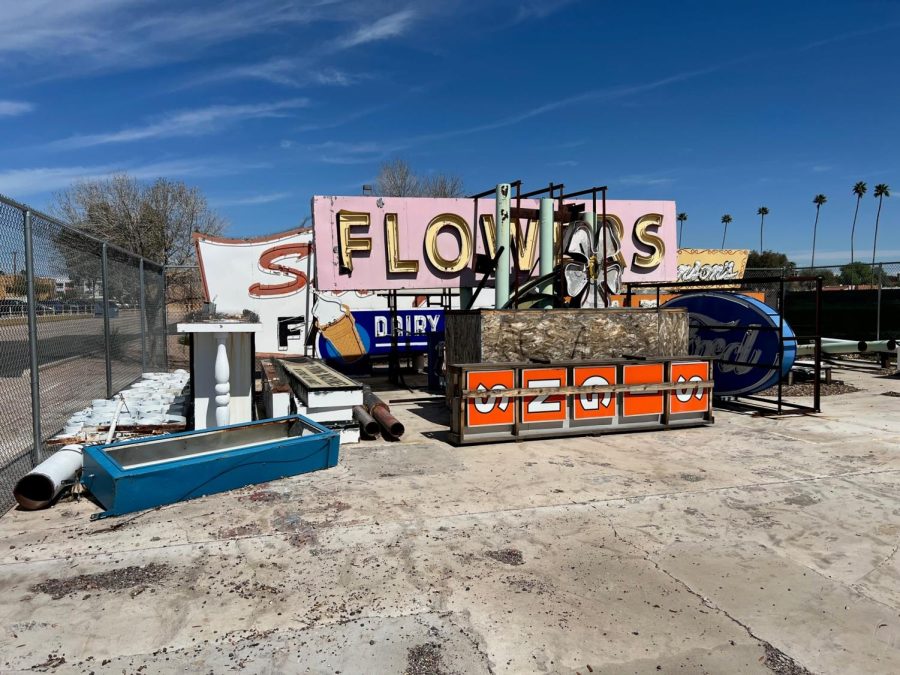Preserving the “oldies” in Mesa—adds to growing neon sign popularity
Courtesy of Ana Pereira, City of Mesa
Historic neon signs await restoration at the storage area in Mesa, Ariz.
April 13, 2023
Neon signage was developed during the early 1900’s and served as a popular medium for business owners to brighten their storefront and attract customers from about 1920 to around 1960.
In recent years, the popularity of gas-filled tube art has skyrocketed. In fact, a 2021 article from Daily Mail, a popular U.K. news site, cited a 300% increase in Google searches for “neon room” and an 800% increase for the same search on Pinterest.
Amid this surge in renewed interest, the city of Mesa has found a new home for a number of once iconic neon signs that used to line Main Street.
A historic building at 26 N. Macdonald in Mesa, Ariz., that once served as the city’s post office, is now a community event space called The Post.
Here, in the outdoor space of the building, the plan is to display the rescued signage in what will be called a “neon garden.”
Restoring the interior of The Post began in February of 2022 with the intention of it becoming a space that welcomes the public. Adding the restored signs is how the city aspires to pay tribute to not only the building, but also the historic signs.
Vic Linoff, president of the Mesa Preservation Foundation, has dedicated over ten years towards restoring and turning back the clock on Mesa’s neon signs.
The first sign that the foundation deemed in need of saving was the animated Diving Lady at Lindsay and Main, after a 2010 microburst caused it to fall.
“We realized that if we didn’t take immediate action, it probably was going to be lost forever,” Linoff said.
This was the catalyst that sparked the Mesa Preservation Foundation’s interest in preserving the vintage signs. With the help of the city, they have been able to be proactive about acquiring the signs, as well as receiving community contributions to help restore them.
“The city has been very helpful… they improvised a storage yard in which we can safely store the signs until we restore them,” Linoff said. “It’s been a very good partnership.”
Jeff McVay, manager of Downtown Transformation, worked with Linoff on narrowing down optimal space for the signs. McVay is also a resident of downtown Mesa and sees how impactful the history of neon is.
“I just think it’s a really good attractor of people, it’s a way to create a place that’s memorable,” McVay said.
Although some signs are in better shape than others, the work is far from done.
Linoff admits that the foundation underestimated the cost and the amount of time it would take when first taking this project on with the Diving Lady. There is a lot that goes into restoring the signs, especially when considering their size.
“It’s hard to imagine just how monumental in size they are,” Linoff said.
The public and those involved are eager to have the neon garden open, but constructing the space for these eye-catching signs will likely not start until next year.
“It’s more than an advertising medium, it’s something that is truly artistic,” Linoff said.



